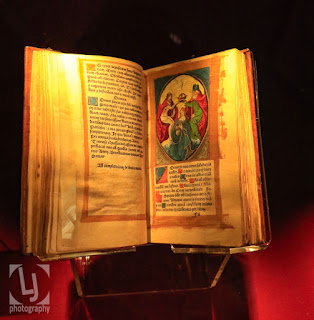Hever Castle
is located in the village of Hever, Kent, near Edenbridge, 30 miles south-east
of London, England. It began as a country house, built in the 13th century.
Hever
castles history spans more than 700 years, and is rich and varied. The original
medieval defensive castle, with its gatehouse and walled bailey, was built in
1270.
In the 15th and 16th centuries it was the home of one of the most
powerful families in the country, the Boleyns, who added the Tudor dwelling
within the walls.
The Castle
was to become the childhood home of Anne Boleyn, King Henry VIII’s second wife,
who became Queen of England for just 1,000 days. It was Henry’s love for Anne
and her insistence that she became his wife rather than his mistress that led
to the King renouncing Catholicism and creating the Church of England.
Hever later
passed into the ownership of another of Henry VIII’s wives, Anne of Cleves, and
from 1557 onwards it was owned by a number of families but gradually it
fell into decline before William Waldorf Astor invested time, money and
imagination in restoring the Castle. He commissioned the ’Tudor Village’, now
called the ‘Astor Wing’ and the construction of the magnificent gardens and
lake.
The castle
is itself sits on a huge estate with various architectural buildings scattered
around an amazing lake. This brings with it building styles ranging from French provincial,Italian renaissance and even a Japanese summer house.
During my walk around the grounds i stumbled across an old Saracen light tank and a 25
pounder canon, only to be pleasantly surprised to then find I had come across the Kent and County of London Yeomanry (Sharpshooters)
Museum.
The Kent and County of London Yeomanry
(Sharpshooters) unit was formed in 1961 as the
amalgamation of two yeomanry regiments,
the 297 (Kent Yeomanry) Regiment,
Royal Artillery and the 3rd/4th County of London Yeomanry (Sharpshooters).
It served initially as an armoured reconnaissance regiment until 1967 and the
re-organisation of the TA, when it was disbanded and reconstituted as three
separate units.
Highlights
- Seeing Anne Boleyn’s pocket bible which she took with her to the execution bench at the tower of London. Blood spills can be seen on the pages.
- Beautiful Gardens well preserved and cared for over 300 years old.
- King Henry VIII’s elaborate gold plated door locks on nearly all the stately rooms.
- Secret personal prayer room hidden behind a wall
- Tudor Windows and solid Oak beams (300 years old)
- Local pub built in 1597. Loved the bitter
- Ancient Tomb in the village parish 15th Century














































Comments
Post a Comment